Story highlights
Mine-laden fields cover Iraq's northern region
Mines Advisory Group working with local villagers to safely clear explosives
Children are taught how to avoid landmines and bombs that look like toys
On a concrete pad in the middle of a dusty village in northern Iraq, children sit attentively as an animated pair of teachers delivers the lesson. Keeping the attention of these youngsters could mean the difference between them living or dying.
“Is this something you can touch in the street?” one teacher asks the children, pointing at poster of photographs, including toys.
“No!” comes the answer, loudly and in unison. The lesson has been learned: an enemy without a conscience will – and has – booby-trapped toys.
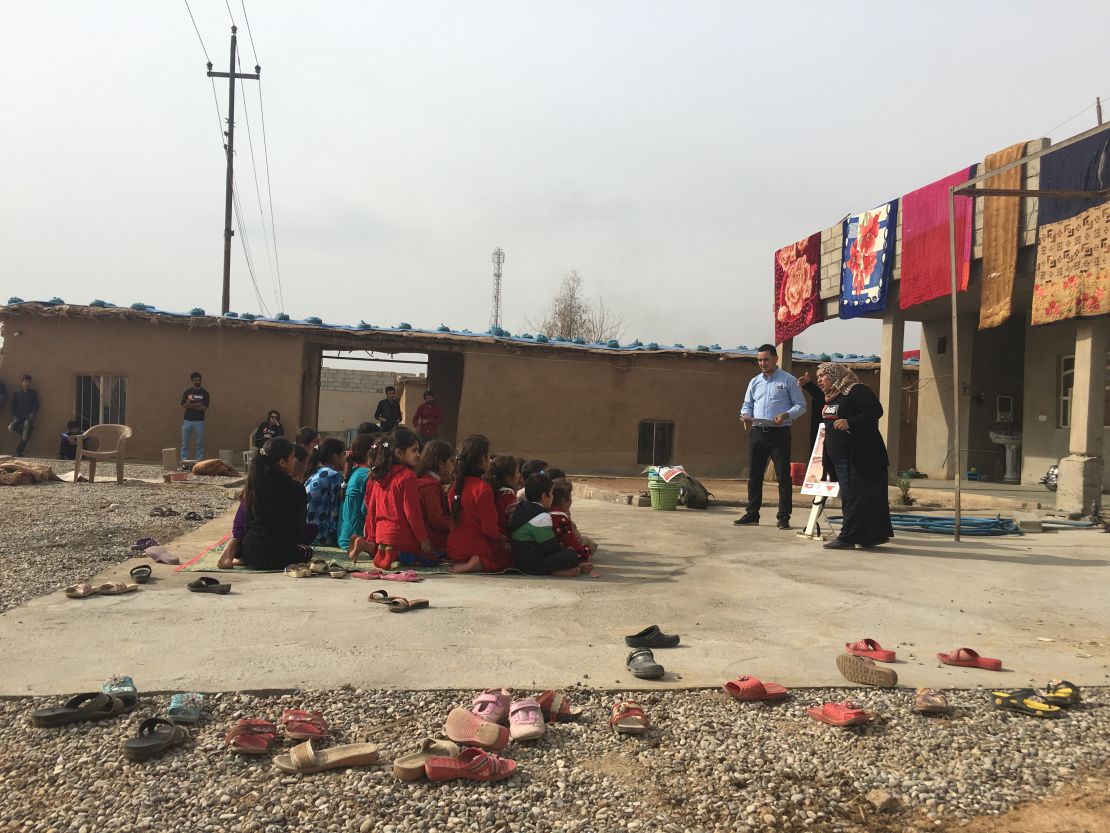
Earlier, a few hundred meters away, we walk a marked path between red stakes as Salaam Muhammed approaches a taped-off object in the ground. It’s a landmine, exposed but still in place.
“This is an example,” Muhammed says. We ask him if it has been defused. “No, it’s not, no,” he says, almost casually, as we stand perhaps a meter away.
“And over here – this place – this is where one of the villagers was killed. The fourth villager.”
MORE: CNN team caught in ISIS crossfire
Triggered by a child’s step
In fact, more than a dozen people have been killed in this area in recent weeks after tripping booby traps in their home, or stepping on one of these mines. They’re packed with enough explosives to rip through a car, but with a detonator sensitive enough to be set off by a child’s step.
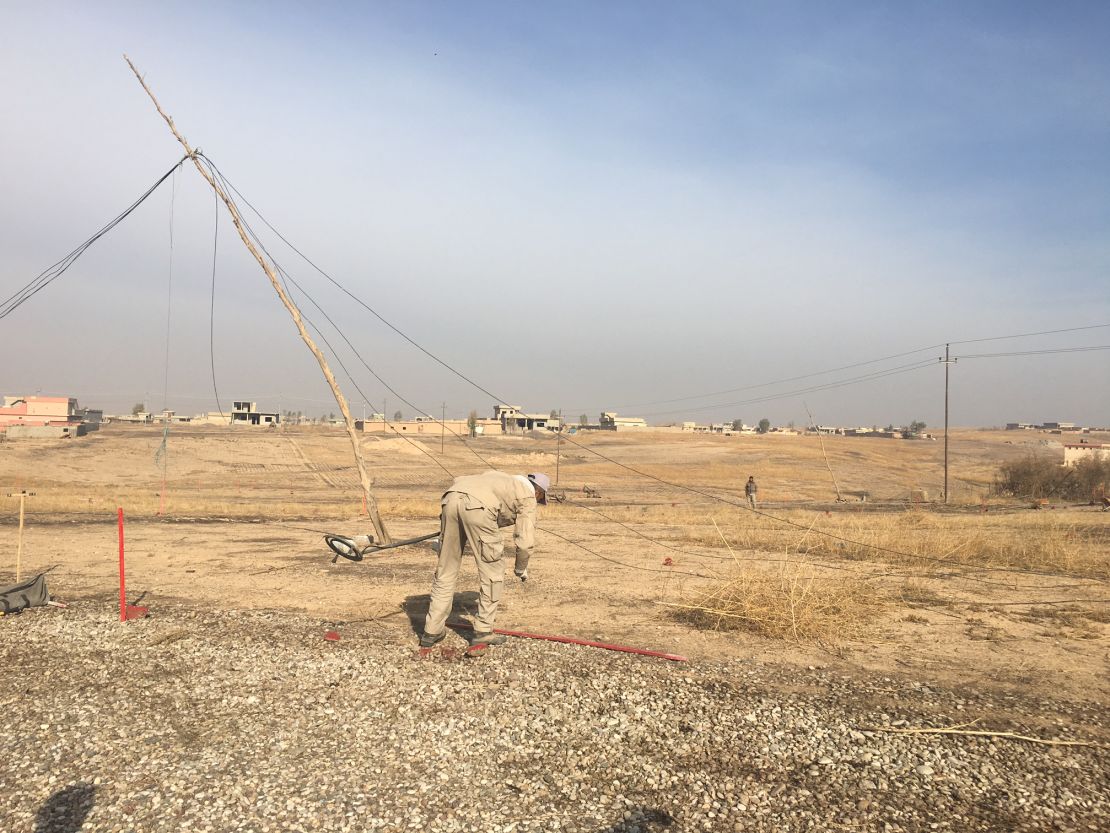
Muhammed is a Technical Field Manager for the Mines Advisory Group (MAG), an international NGO engaged in mine removal in 19 countries. He has worked in many of those countries in his 29 years with the group, but has never seen a more heavily-mined place than his home region here in Iraq.
“Thousands,” he says when asked how many mines and booby traps might be in this district. “Thousands – though we don’t know for sure.”
The evidence of that is visible throughout the village and the surrounding farmland – dozens of small taped-off areas around mines already carefully exposed by hand, and hundreds of red stakes that stretch into the distance showing where the next deadly device is.
“We find more every day,” says Muhammed.
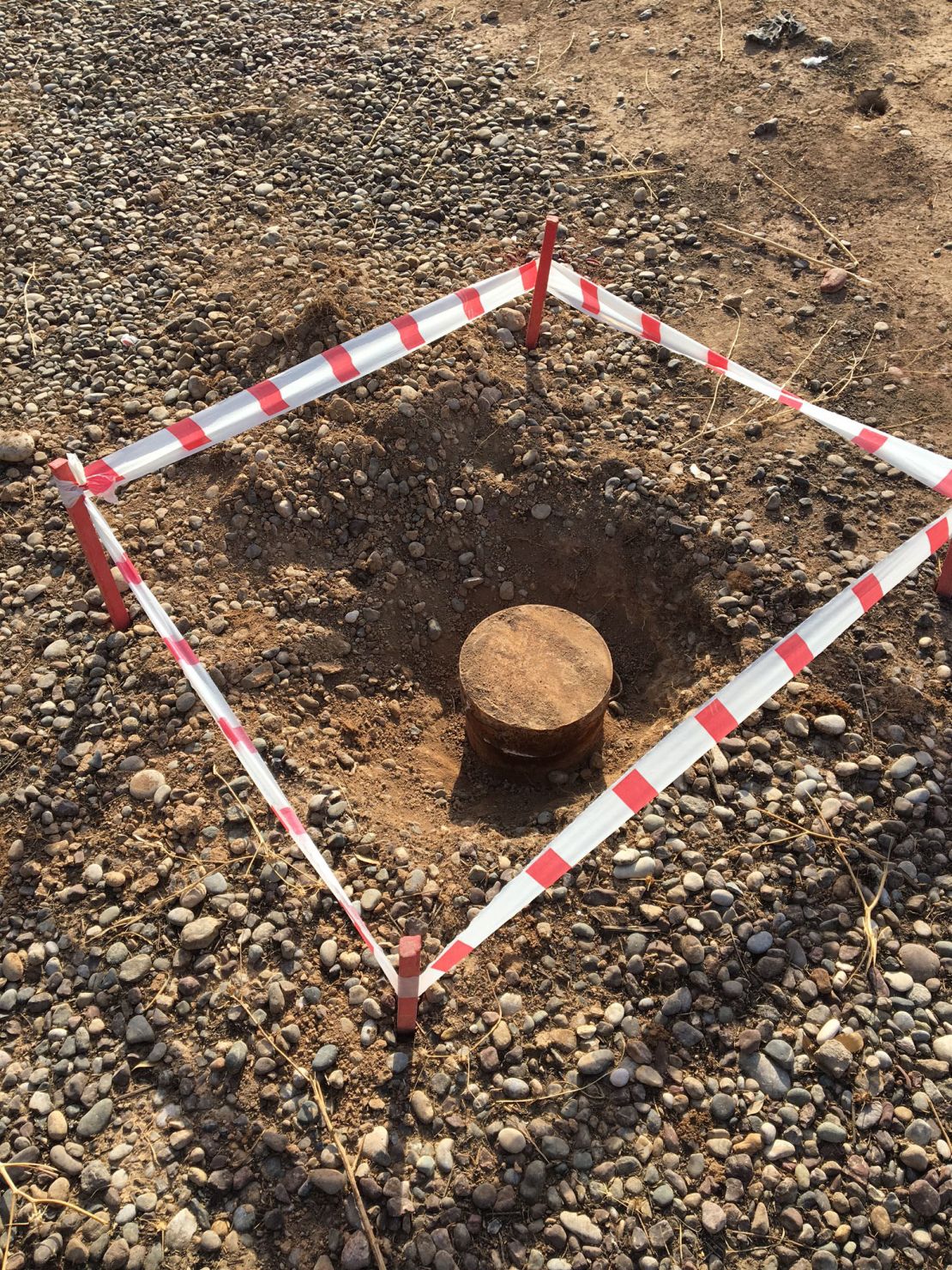
‘I do this for the people’
Muhammed is a man with a broad smile, an infectious laugh and an aura of confidence and charm. It’s almost incongruous with the work he’s doing and the risk it entails.
“I do this for the people,” he says. “This is above all a humanitarian issue – if we don’t do this and do it well, people will continue to die.”
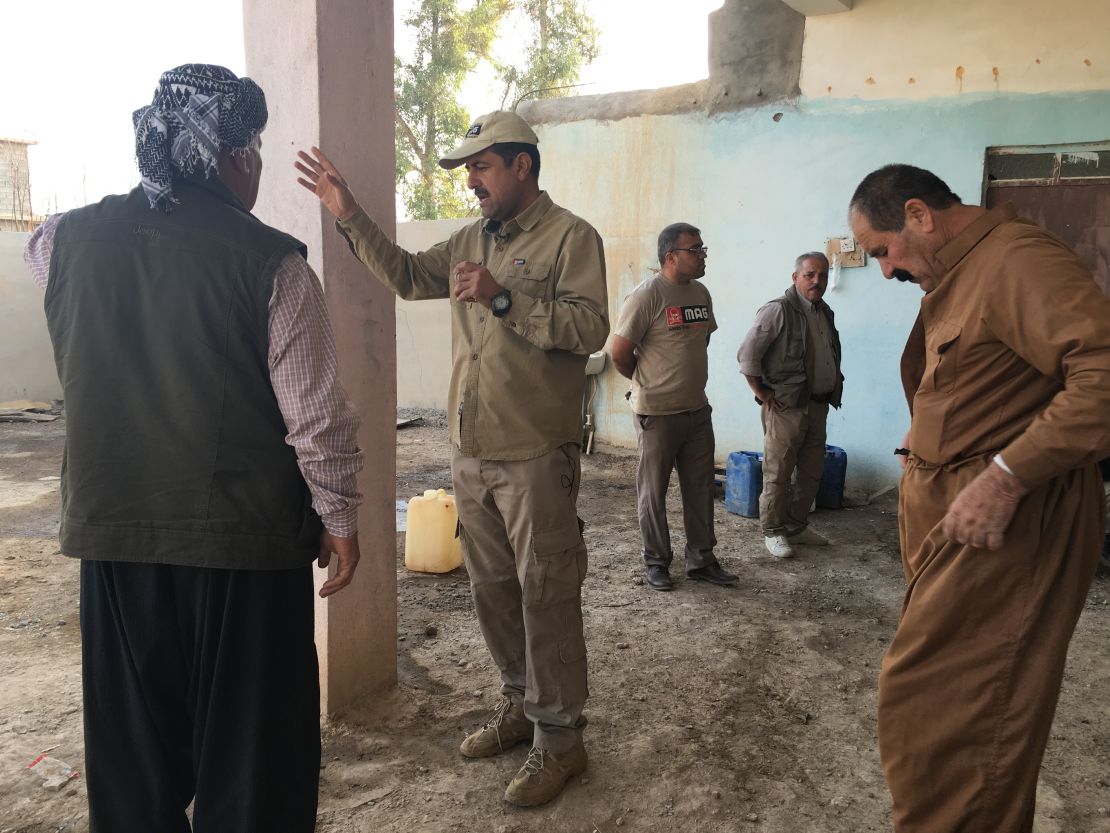
Most people in the villages around here fled two years ago when ISIS arrived.
Now, they’re starting to return – against the advice of Muhammed and his team, who want them to wait until it’s safe. But many can no longer afford to pay rent elsewhere so they’re coming home – 65 families returned in recent weeks, and more are arriving every day.
The Iraqi women who escaped ISIS but lost everything
“We have no choice but to come back,” Hamid Merza tells us, even though doing so cost his son Muslih his life. He was killed when he triggered a booby trap at a village mosque.
Hamid is, like everyone here, profoundly grateful for what MAG is doing: “We thank God for them coming, or maybe everyone might die here.”
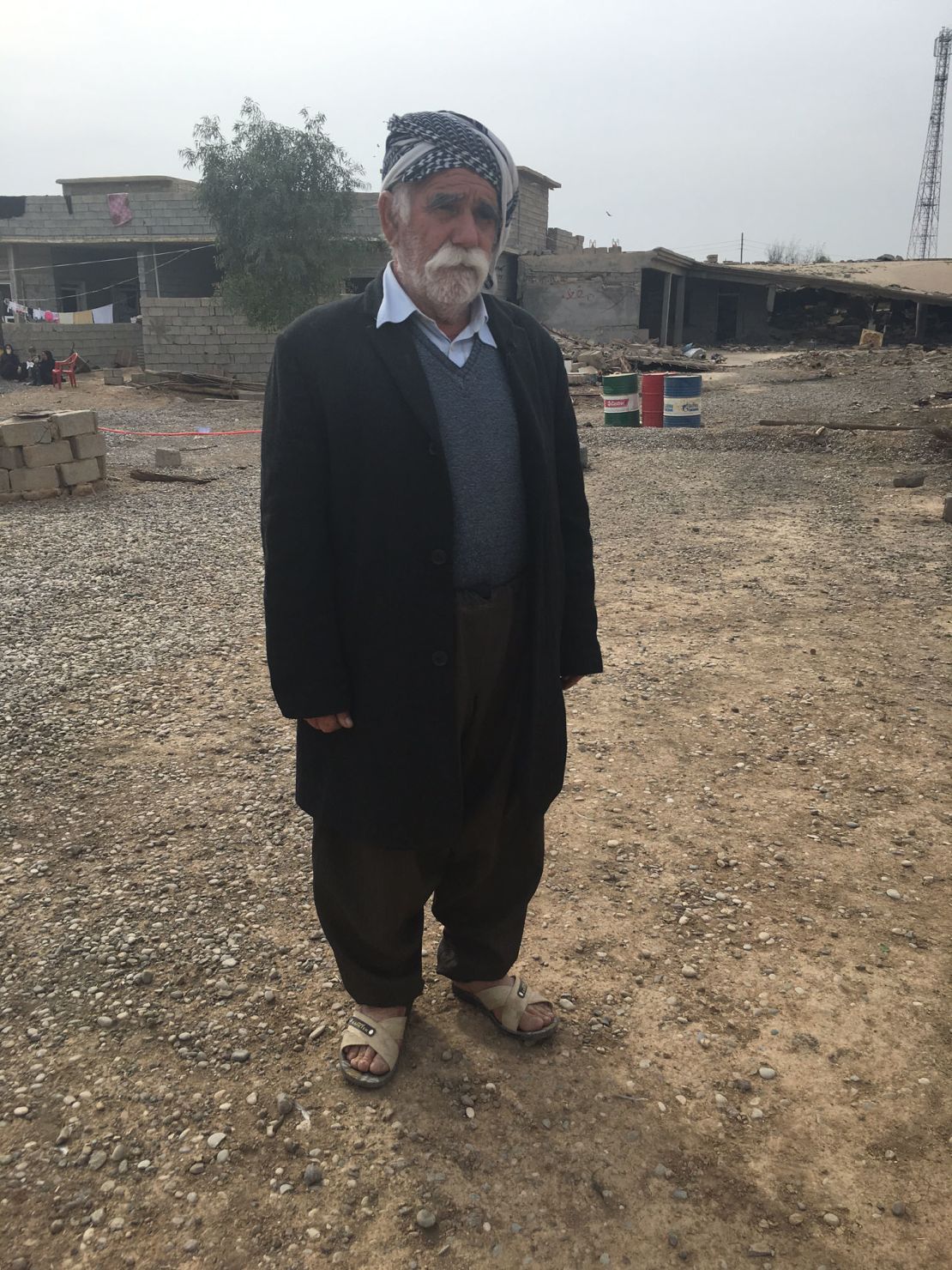
At one point Muhammed asks if we want to see inside a booby-trapped house. He won’t let us come inside for obvious reasons, but agrees to wear a camera we provide.
When we review the video, it is an eerie scene. The house is in disarray – Salaam thinks there could be several booby traps hidden among the disturbed furniture and clothes strewn around.
Slowly and deliberately, he traces the route through the rooms he has already cleared, pausing near a chest of drawers. Beneath it lies an artillery shell, wired to explode if disturbed.
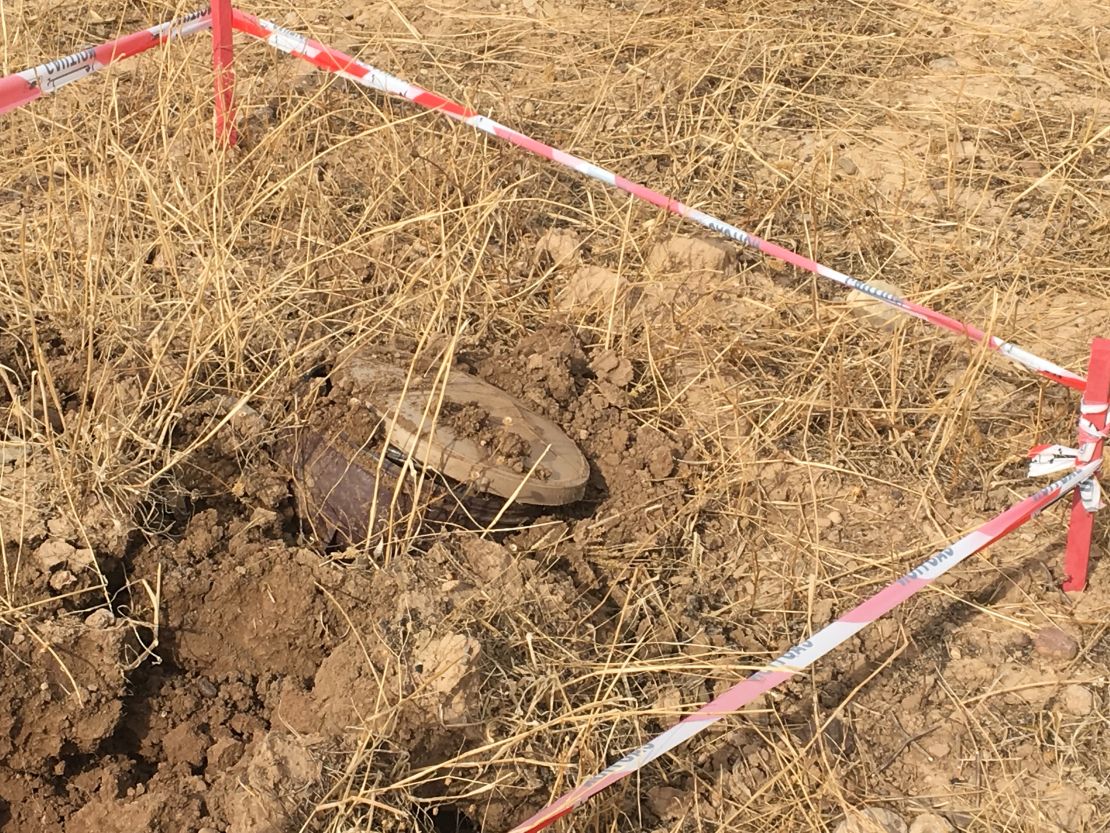
Sean Sutton, MAG’s International Communications Manager, calls what’s happening here a “race against time.”
“It’s about getting to the mines before a child does at the end of the day,” he says.
“As you can see this is the front line of humanitarian work. Until the mines are cleared, nothing can be done here – people can’t go home, or certainly can’t go home safely, and even other aid agencies can’t safely come to help rebuild.”
‘The people came home and it had been booby trapped’
As our walking tour of the village with Salaam Muhammed continues, we are interrupted by a villager who pulls up in a red pickup truck. A man who looks to be in his forties, sporting the distinctive moustache the men proudly grow around here, gets out and approaches.
He describes a suspicious object he found in his home when he came back. Muhammed promises to come by and take a look. He tells us this happens at least once and sometimes several times a day.
Next, we go to the roof of one house to look at the collapsed rubble of the one next door.
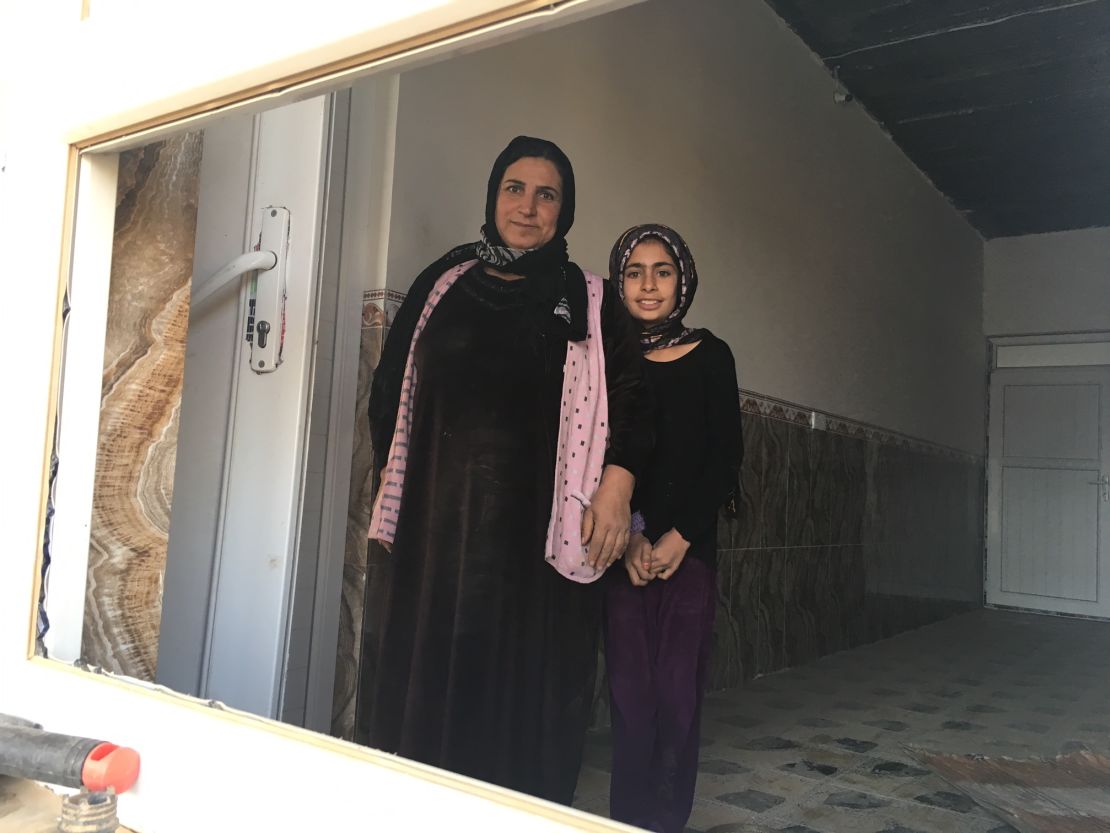
“The people came home and it had been booby trapped – lots of explosives,” says Muhammed. Three people died here walking into their own home, he tells us, as we look down at a roof that has been pancaked to the ground.
The stories we’ve heard about booby-trapped homes are terrible. Kurdish de-miners – less experienced than the MAG team and woefully under-equipped – told us a couple weeks back of how ISIS had rigged explosives to light switches and even refrigerator doors for unsuspecting homeowners to trigger.
ISIS planted them all, they said.
“Daesh (the local name for ISIS) are pure evil,” the village leader Aziz Anzan Abdullah says. “If not for these people (the MAG team) we would lose local people every day. May God protect them.”
Off the side of the track – an area we’re not allowed to enter – a young man sweeps a patch of ground perhaps three meters wide in front of a piece of wood. When he’s done, he moves the wood ahead a few centimeters and repeats the process.
It is painstaking, meticulous work. It has to be.
“At the end of the day, 100 percent should be cleared and then we will hand it back to the communities, so yeah 100 percent we are responsible,” Salaam says.
There’s a village full of people grateful for that promise.
MORE: Mosul hospital struggles to cope with influx
Updated: CNN has removed some place names from this story due to security concerns.

